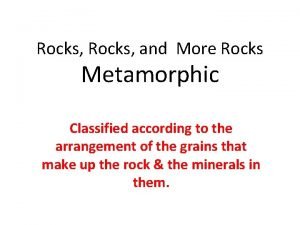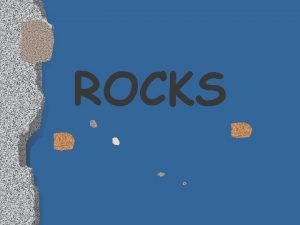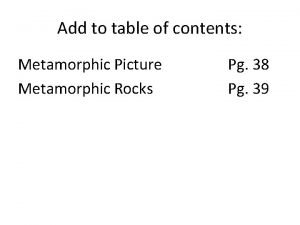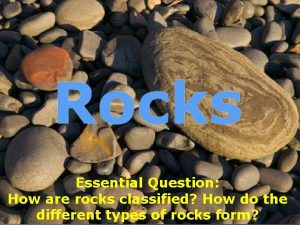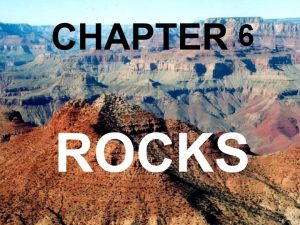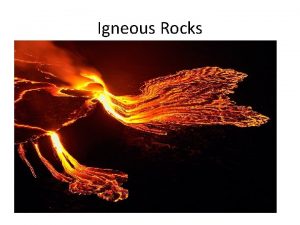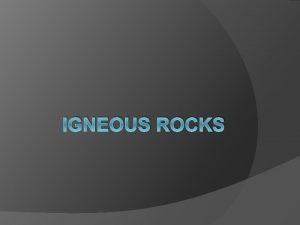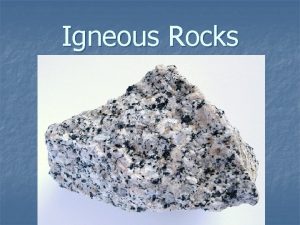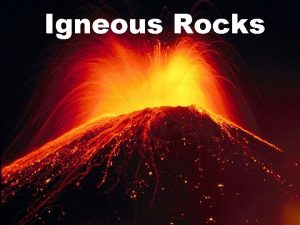6 Classifying Igneous Rocks Igneous rocks are classified









- Slides: 9

6

Classifying Igneous Rocks Igneous rocks are classified by their TEXTURE and their COMPOSITION TEXTURE INTRUSIVE IGNEOUS ROCKS (Plutonic) rocks that form below the surface surrounded by layers of Earthheat cannot escape slowly cooled magma produces individual mineral grains that are large enough to see

EXTRUSIVE IGNEOUS ROCKS (Volcanic) rocks that form from lava above the surface lava is exposed to air and water magma cools quickly producing fine grained rocks (cannot see mineral grains) atoms do not have time to arrange themselves in repeating patterns

INTRUSIVE OR EXTRUSIVE? ? Pumice Obsidian Scoria EXTRUSIVE Granite INTRUSIVE Diorite INTRUSIVE

Porphyry • A mixture of large and small crystals • Magma rises slowly through the crust before erupting to the surface – Within the crust, large crystals can grow – On the surface, cooling stops any more crystals from growing

Vesicular • Refers to vesicles (holes, pores, or cavities) within the igneous rock. • Vesicles are the result of gas expansion (bubbles), which often occurs during volcanic eruptions. • Pumice and scoria are common types of vesicular rocks.

Classifying Igneous Rocks COMPOSITION type of magma or lava BASALTIC ROCKS (Mafic) dense dark colored very fluid high amount of magnesium & iron low gas content found in the volcanoes of Hawaii How does this explain the black sand beaches of Hawaii?

GRANITIC ROCKS (Felsic/Intermediate) lower-density light colored thick & stiff magma high amount of silica & oxygen contains a lot of gas causing very explosive eruptions

ANDESETIC ROCKS (Dioritic) mineral composition between that of basaltic and granitic rocks can have violent eruptions or quiet eruptions medium silica content medium thickness many volcanoes around the Pacific Ring of Fire contain andesitic magma




